Discovering the Ultimate Cat Litter Boxes: A Definitive Guide to Enhance Your Feline's Comfort
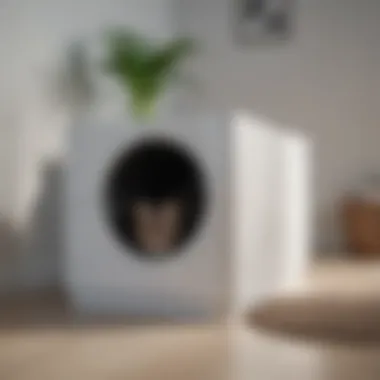
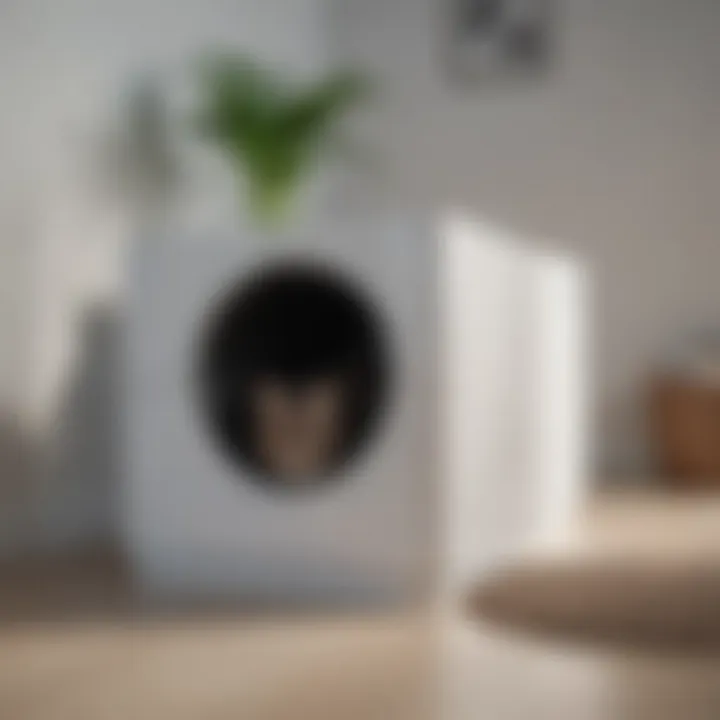
Cat Litter Box Materials
When delving into the realm of cat litter boxes, one of the fundamental aspects to consider is the materials from which they are constructed. The choice of material can significantly impact the overall quality and functionality of the litter box. Common materials used in manufacturing cat litter boxes include plastic, metal, and wood. Plastic litter boxes, known for their affordability and durability, are easy to clean and maintain. On the other hand, metal litter boxes offer enhanced sturdiness and longevity, ensuring long-term usage. Wood litter boxes exude a natural and aesthetic appeal, blending seamlessly with home decor, but they may require more upkeep to prevent damage from moisture.
Design Features and Options
Beyond materials, the design features of a cat litter box play a crucial role in its effectiveness and user-friendliness. Various design options are available in the market to cater to different preferences and requirements. These include open-top litter boxes, enclosed or hooded designs, self-cleaning litter boxes, and top-entry litter boxes. Open-top litter boxes provide easy access for cats but may lead to litter scattering. Enclosed litter boxes offer privacy and odor control, while self-cleaning options automate the scooping process, minimizing maintenance. Top-entry litter boxes help contain mess and prevent litter tracking.
Size and Space Considerations
Another vital aspect to ponder when selecting a cat litter box is the size and space availability in your home. The size of the litter box should be adequate to accommodate your cat comfortably. Consider the dimensions of your feline friend to ensure they have enough room to move and turn within the litter box. Additionally, factor in the space where the litter box will be placed. It should be in a quiet and easily accessible location, ideally away from food and water bowls. Moreover, having multiple litter boxes in multi-cat households can prevent territorial issues and promote litter box acceptance.
Odor Control and Maintenance
Odor control and maintenance are paramount factors to uphold a hygienic and pleasant environment for both you and your cat. Opt for litter boxes equipped with odor-absorbing properties or select litter with deodorizing capabilities. Regular cleaning and scooping are essential to prevent odor buildup and maintain cleanliness. Consider using liners or mats to simplify litter box cleaning and contain scattered litter. Additionally, incorporating air fresheners or ventilation in the litter box area can help minimize unwanted odors.
Conclusion
Introduction to Cat Litter Boxes
In this comprehensive guide titled 'Exploring the Best Cat Litter Boxes,' the significance of understanding cat litter boxes is paramount. Cat owners strive to provide their feline companions with the best environment, and the choice of litter box plays a crucial role in their well-being. Factors such as maintaining cat hygiene, preventing litter mess, and promoting cat comfort are key aspects that influence the decision-making process. By delving into the world of cat litter boxes, individuals can elevate their cat's living experience and ensure optimal comfort and hygiene.
Understanding the Importance of Choosing the Right Litter Box
Maintaining Cat Hygiene
Maintaining cat hygiene is essential in fostering a healthy environment for feline friends. A clean litter box not only prevents the spread of bacteria and odor but also promotes the overall well-being of the cat. The use of hygienic materials and efficient waste removal mechanisms contributes to a sanitary space for cats. Choosing a litter box with antimicrobial coatings can further enhance hygiene levels, ensuring a long-lasting and healthy living environment.
Preventing Litter Mess
Preventing litter mess is a common concern for cat owners. Selecting a litter box that effectively contains scattered litter and minimizes tracking can save time and effort in cleaning. Features such as enclosed entryways and high side walls can help confine litter within the box, reducing mess around the home. While some cats may prefer open litter boxes for ease of access, covered or top-entry options can significantly reduce litter spillage and maintain a tidier living space.
Promoting Cat Comfort
Promoting cat comfort through the choice of litter box is crucial for ensuring the cat's well-being. Cats appreciate privacy and security while using their litter box, making the selection of an appropriate size and entry style vital. Providing a comfortable and inviting space for cats to relieve themselves contributes to their overall happiness and reduces stress levels. By prioritizing cat comfort in the selection process, owners can create a nurturing environment that meets their pet's needs.
Factors to Consider When Selecting Cat Litter Boxes
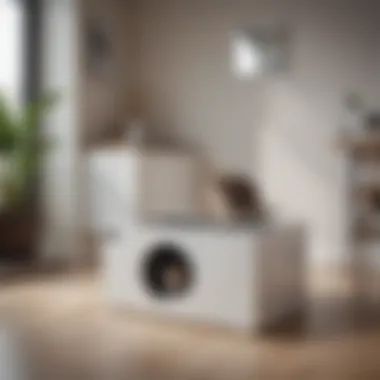
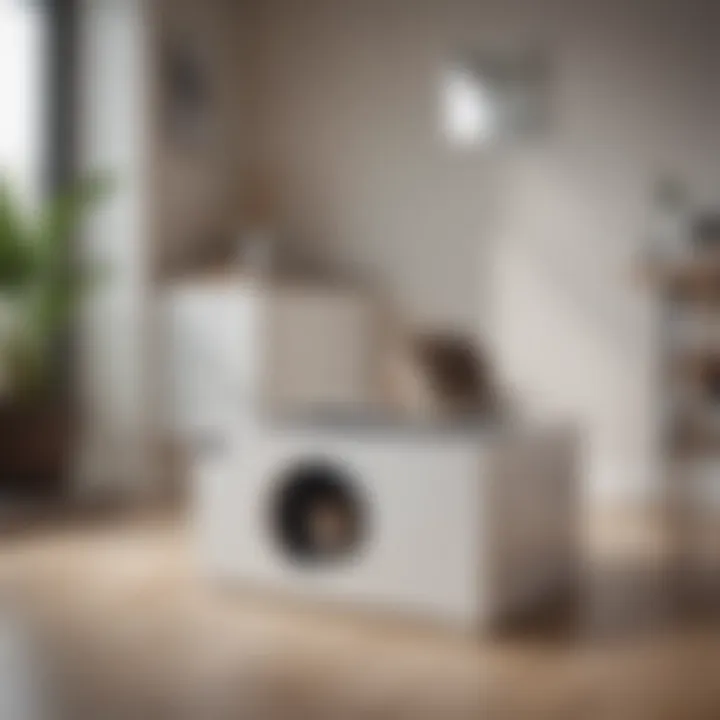
Size and Dimensions
Choosing the right size and dimensions for a cat litter box is essential for accommodating the cat's needs. Cats vary in size, and selecting a box that allows ample space for movement and digging is crucial. Opting for a size-appropriate litter box can prevent cats from feeling confined and encourage regular use. Additionally, considering the height and length of the box is important to ensure comfort and accessibility for the feline companion.
Entry Style
The entry style of a litter box impacts the ease of access and privacy for the cat. Cats have individual preferences, with some favoring open-top boxes and others feeling more comfortable in covered or top-entry designs. Choosing an entry style that aligns with the cat's preferences promotes a stress-free toileting experience. Providing multiple entry options can accommodate cats of different sizes and ages, catering to their specific needs and ensuring seamless adoption of the litter box.
Material Quality
The material quality of a cat litter box influences its longevity and effectiveness in maintaining hygiene. Durable and non-absorbent materials are ideal for preventing the buildup of odors and stains, ensuring easy cleaning and maintenance. Additionally, selecting materials that are non-toxic and comfortable for cats enhances their overall litter box experience. Investing in a high-quality litter box with sturdy construction can contribute to long-term satisfaction and functionality.
Odor Control Features
Odor control features play a significant role in maintaining a fresh and pleasant environment for both cats and their owners. Litter boxes with adequate ventilation systems and odor-absorbing properties can mitigate unwanted smells and promote air circulation. Incorporating features such as charcoal filters and deodorizing agents can enhance the overall cleanliness of the litter box area. Choosing a litter box with effective odor control mechanisms ensures a hygienic and odor-free living space for feline companions.
Ease of Cleaning
Ease of cleaning is a crucial consideration when selecting a cat litter box. Owners seek hassle-free maintenance solutions that simplify the cleaning process and promote regular upkeep. Litter boxes with removable trays, quick-release mechanisms, and smooth surfaces facilitate efficient cleaning routines. Opting for a box that is easy to disassemble and clean improves hygiene levels and encourages consistent litter box maintenance. Prioritizing ease of cleaning in the selection criteria ensures a convenient and hygienic experience for both cats and their owners.
Types of Cat Litter Boxes
In this section of the guide on exploring the best cat litter boxes, we delve into the significance of understanding the different types of litter boxes available for your feline companion. An essential aspect of cat ownership, the type of litter box chosen can profoundly impact your cat's comfort, hygiene, and overall litter experience. By exploring the various types, you can tailor your selection to meet your cat's specific needs, promoting a cleaner and more inviting litter area within your home.
Open Litter Boxes
Open litter boxes, as the name suggests, provide a spacious and easily accessible environment for your cat to do their business. One of the primary advantages of open litter boxes is the unrestricted entry and exit points, making it ideal for cats who may feel confined or claustrophobic in enclosed spaces. However, a notable drawback is the lack of privacy it offers, which can be a concern for cats who prefer a more secluded environment for their litter activities. Despite this, open litter boxes remain a popular choice due to their simplicity and ease of cleaning, ensuring a low maintenance litter solution for pet owners.
Pros and Cons
The key benefit of open litter boxes lies in their uncomplicated design, which facilitates hassle-free cleaning and litter changes. This simplicity not only saves time but also promotes regular litter maintenance, essential for your cat's hygiene and well-being. On the flip side, the lack of a cover exposes the litter area, potentially leading to scattered litter outside the box and requiring frequent cleanups.
Suitability for Cats
Open litter boxes are suitable for cats who do not mind using exposed litter trays and prefer a more open environment for their elimination needs. Cats who are comfortable with uncovered spaces and do not have privacy preferences often find open litter boxes to be a convenient and functional solution for their litter requirements.
Covered Litter Boxes
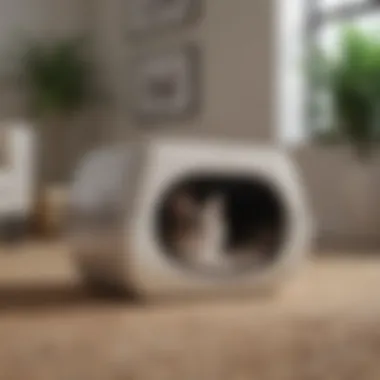
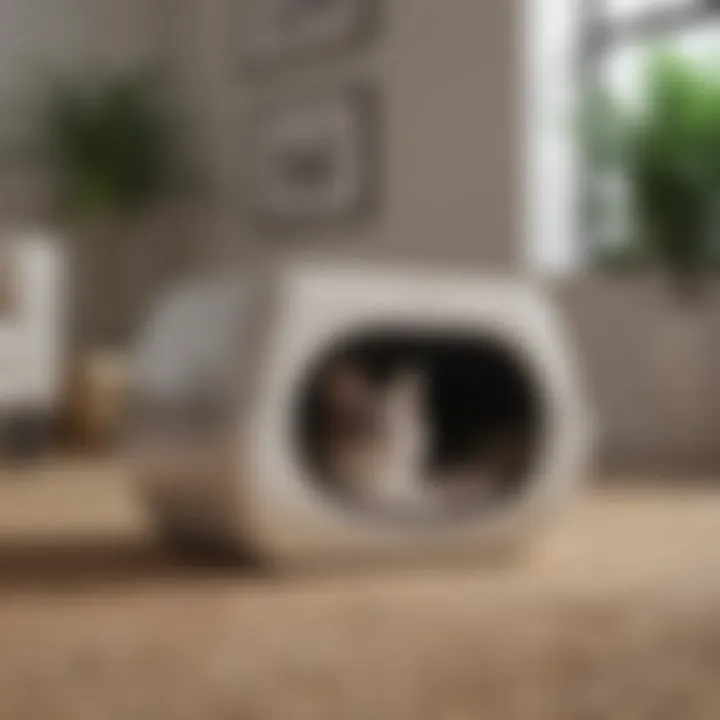
Covered litter boxes offer a more enclosed and private space for cats to relieve themselves, catering to felines who value seclusion during their litter activities. The concept of covered litter boxes revolves around providing a secluded area that mimics a natural den, offering a sense of security and privacy to your cat while containing odors within the enclosed space. While covered litter boxes excel in providing privacy, they also come with certain disadvantages, such as potential odor accumulation within the covered space and the need for regular cleaning to maintain a fresh environment for your cat.
Advantages and Disadvantages
One of the primary advantages of covered litter boxes is their ability to contain odors effectively, reducing unpleasant smells in your living space. Additionally, the enclosed design helps prevent litter scatter outside the box, maintaining a tidier litter area. However, the confined space within covered litter boxes can lead to odor concentration, necessitating frequent cleaning to ensure a hygienic environment for your cat.
Ideal for Cats with Privacy Preferences
Covered litter boxes are particularly suitable for cats who value privacy and seclusion during their litter activities. Cats that are more reserved or easily startled may benefit from the enclosed nature of these litter boxes, providing them with a secure and discreet area to attend to their elimination needs.
Key Features to Look for in Cat Litter Boxes
In this segment of the comprehensive guide on exploring the best cat litter boxes, we delve into the crucial factors to consider when selecting a cat litter box. The choice of a litter box plays a significant role in maintaining your feline companion's hygiene, preventing messy litter situations, and ensuring their comfort. Ensuring that the selected litter box meets your cat's needs is essential for a pleasant and stress-free environment for both you and your pet. The size and dimensions, entry style, material quality, odor control features, and ease of cleaning are fundamental aspects to weigh when deciding on the perfect litter box.
Sifting Mechanisms
Efficiency in Waste Removal
Efficiency in waste removal is a key attribute that enhances the user experience of a litter box. By efficiently eliminating waste, this feature helps in keeping the litter box clean and hygienic for your cat. The design of this mechanism focuses on simplifying the removal of soiled litter, minimizing manual labor, and ensuring a more sanitary environment. Its seamless operation promotes convenience and encourages regular maintenance, contributing to a healthier and more pleasant space for your pet. Although some may find the initial investment slightly higher, the long-term benefits of a litter box with efficient waste removal are well worth it.
User-Friendly Design
The user-friendly design of a cat litter box plays a vital role in ensuring ease of use for both the pet owner and the cat. This feature focuses on simplifying the cleaning process, making it less of a chore and more of a routine task. With thoughtful design elements such as accessible entry points, ergonomic handles, and simple mechanisms, user-friendly litter boxes aim to streamline the maintenance process, fostering a stress-free experience for both cats and their owners. While some designs may be more simplistic in appearance, their functionality and convenience make them a popular choice among cat owners looking for efficient solutions.
Anti-Microbial Coatings
Hygienic Benefits
The inclusion of anti-microbial coatings in cat litter boxes provides essential hygienic benefits for both the cat and its environment. These coatings help inhibit the growth of bacteria and pathogens, reducing the risk of infections and illnesses. By maintaining a cleaner and more sanitary litter box, cats are less exposed to potential health hazards, promoting their overall well-being. The hygienic benefits of anti-microbial coatings make them a preferred choice for pet owners conscious about providing a safe and healthy space for their beloved companions.
Extended Longevity of the Box
Anti-microbial coatings also contribute to the extended longevity of the litter box by preventing the proliferation of harmful microorganisms that can degrade the material over time. By preserving the structural integrity of the box, these coatings ensure durability and functionality for an extended period. Additionally, the increased lifespan of the litter box translates to cost savings for the owner in the long run, making it a prudent investment for those seeking a lasting and reliable solution.
Ventilation Systems
Improved Air Circulation
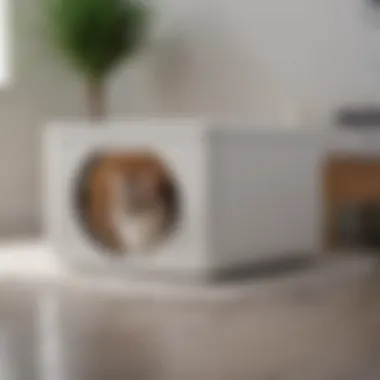
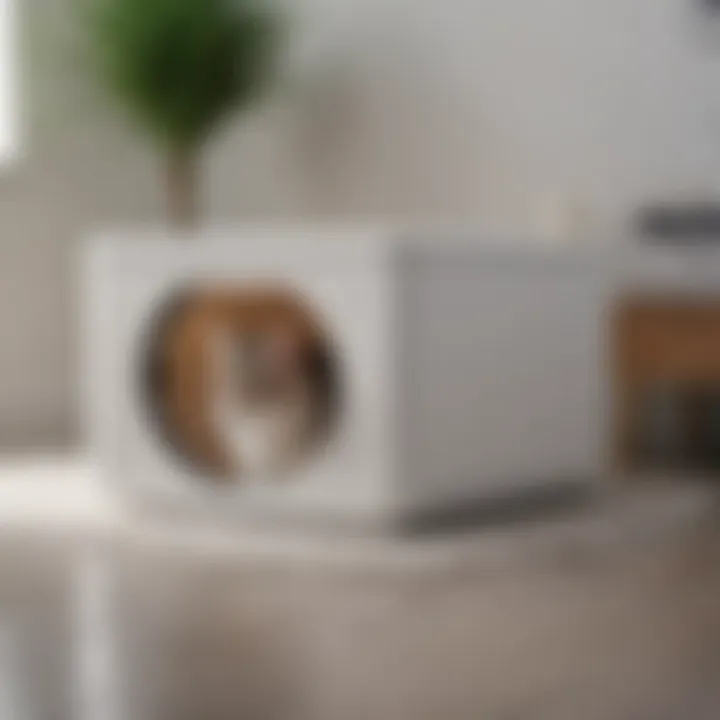
Effective ventilation systems in cat litter boxes facilitate improved air circulation within the box, reducing moisture buildup and stale odors. By enhancing airflow, these systems help maintain a fresh and odor-free environment for both the cat and its owner. The improved air quality also adds to the overall comfort of the cat during its litter box visits, creating a more inviting and pleasant space for them to fulfill their needs. While ventilation systems may vary in design, their common goal is to promote a healthier and more enjoyable experience for cats and their owners.
Reduction of Odors
One of the primary benefits of ventilation systems in cat litter boxes is the reduction of odors that often accompany feline waste. By efficiently removing unpleasant smells and keeping the air fresh, these systems contribute to a more hygienic and inviting environment. The ability to control odors effectively enhances the living conditions in the household, ensuring a harmonious cohabitation between pets and their human companions. Investing in a litter box equipped with odor-reducing ventilation systems can significantly improve the overall hygiene and comfort levels for both the cat and its owner.
Maintenance Tips for Cat Litter Boxes:
In this article dedicated to exploring the best cat litter boxes, the section on maintenance tips plays a crucial role in ensuring the overall well-being and satisfaction of both the cat and its owner. By shedding light on the significance of maintaining a clean and functional litter box, cat owners can prioritize their pet's health and happiness effectively. Regular cleaning and upkeep are not just chores but essential practices that contribute to a hygienic environment for the cat, prevent unwanted odors, and promote a sense of comfort and cleanliness. Employing proper maintenance tips for cat litter boxes can significantly enhance the overall litter experience for both the cat and its owner.
Regular Cleaning Procedures:
Frequency Recommendations:
Delving into frequency recommendations regarding cleaning a cat litter box reveals a crucial aspect of responsible pet care. Establishing a routine maintenance schedule based on the number of cats using the box and the type of litter used is essential. Regular scooping at least twice a day is generally recommended, with a full litter change and box cleaning scheduled at least once a week. This frequent cleaning approach helps in maintaining a fresh and inviting litter box environment, reducing odor build-up, and ensuring the cat's comfort and hygiene.
Cleaning Products to Use:
When considering the cleaning products for cat litter boxes, opting for mild, non-toxic detergents or specialized pet-safe solutions is pivotal. Avoiding harsh chemicals is paramount as cats are sensitive to strong scents and substances. Natural cleaners like baking soda or vinegar can help disinfect without imposing harmful fumes. Selecting unscented products is advisable as cats have a keen sense of smell, and overpowering fragrances might deter them from using the litter box. Prioritizing gentle cleaning products ensures a safe and pleasant environment for the cat.
Replacing Litter Box Components:
When to Replace:
Deciding when to replace components of a cat litter box can make a substantial difference in maintaining its functionality and appeal. Monitoring the wear and tear of the litter box, such as cracks, scratches, or deformities, can signal the need for replacement. Additionally, if odors persist even after thorough cleaning, it might indicate the requirement for a new litter box or components like liners or filters. Understanding the signs indicating replacement timing is crucial for sustaining a hygienic and efficient litter box setup.
Cost-Effective Solutions:
Exploring cost-effective solutions when it comes to cat litter box maintenance involves seeking alternatives that provide quality without exorbitant expenses. Opting for durable, long-lasting materials during initial purchase can mitigate the frequency of replacements, thus reducing long-term costs. DIY solutions like repurposing household items for minor repairs or enhancements can also contribute to cost-effectiveness. Balancing quality and affordability ensures that cat owners can prioritize their pet's well-being without overspending, making the litter box maintenance process sustainable and practical.
Conclusion
In the realm of selecting the optimal cat litter box for your feline companion, the journey culminates in the conclusion segment, a pivotal deliberation encapsulating the essence of this exhaustive guide. The significance of this section lies in its ability to synthesize the myriad facets discussed throughout the article, bringing forth a holistic view that aids in informed decision-making. By delving into the final thoughts, readers are empowered to conceptualize a comprehensive framework revolving around the selection and maintenance of cat litter boxes. The conclusion acts as a guiding beacon, emphasizing the paramount importance of aligning cat preferences with functional and aesthetic considerations to optimize the litter experience.
Final Thoughts on Choosing the Best Cat Litter Box
Prioritizing Cat Preferences
Embarking on the discourse surrounding the prioritization of cat preferences within the domain of selecting a litter box, it becomes evident that this aspect carries immense weight in the overall narrative. Central to this paradigm is the inherent focus on tailoring the litter box choice to align with the specific inclinations of individual cats, encompassing factors such as size, material texture, and entry style. The key characteristic of prioritizing cat preferences lies in its ability to enhance the overall well-being and contentment of the feline companion, fostering a sense of comfort and familiarity within their toileting environment. A notable advantage of this approach is the potential for minimizing litter aversion or anxiety in cats, leading to improved litter box acceptance and consistent usage. However, it is essential to acknowledge the associated challenges, including potential limitations in choice variety or accessibility based on individual cat requirements.
Balancing Functionality and Aesthetics
Exploring the nuanced interplay between functionality and aesthetics in the context of selecting the ideal cat litter box unveils a fascinating dimension within the overarching discussion. The key characteristic underlying this aspect is the delicate equilibrium sought between practical utility and visual appeal, aiming to harmonize efficiency with elegance in the chosen litter box design. By striking a balance between these essential elements, cat owners can cultivate a space that not only caters to their pet's needs effectively but also integrates seamlessly into the existing household setting. The unique feature of balancing functionality and aesthetics lies in its capacity to elevate the overall aesthetic value of the living space while ensuring optimal functionality for the feline occupant. This dual-purpose approach presents a notable advantage in creating a cohesive living environment that prioritizes both the cat's comfort and the owner's aesthetic preferences. Nevertheless, considerations regarding potential trade-offs between aesthetics and maintenance requirements should be carefully evaluated to achieve a harmonious blend tailored to individual lifestyle constraints.



